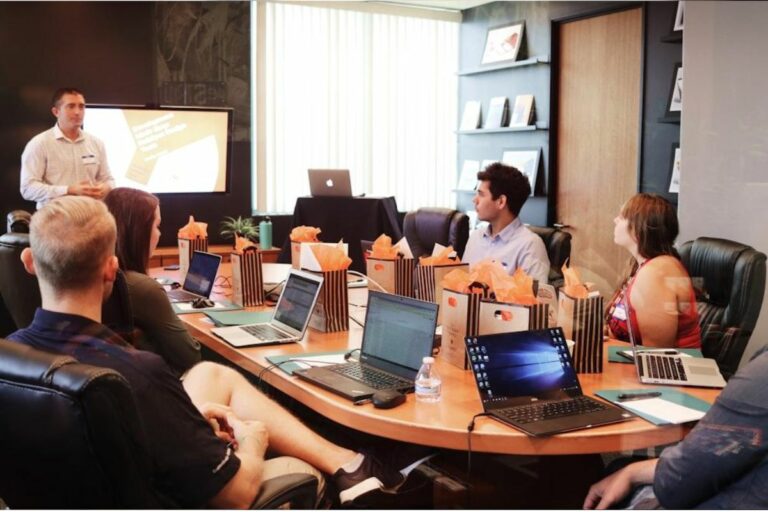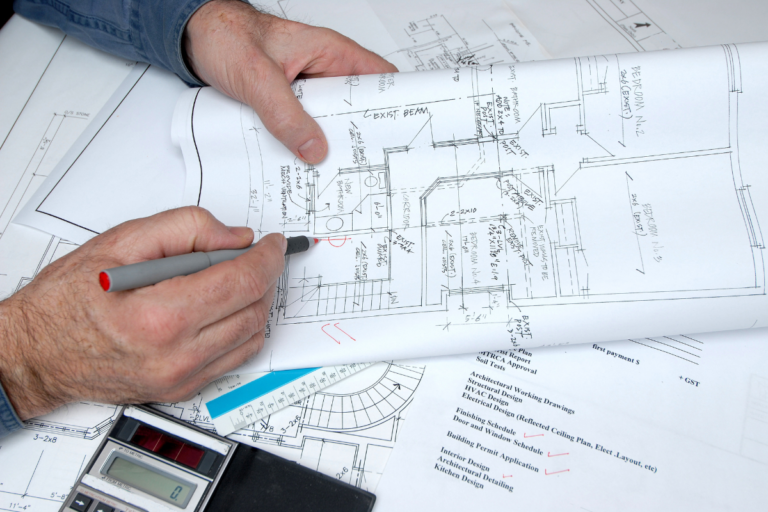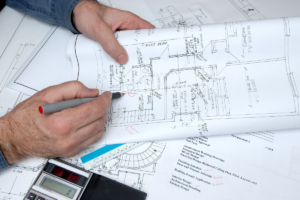Are you interested in leading your group to success? Or have you already been given a leadership role and are seeking strategies to succeed?
You might be surprised at how easy it is to start cultivating the inner leader within yourself with some simple steps.
Leadership training isn’t an exclusive activity for top-level executives. Anyone can become a great leader if they put their mindsets, focus and effort into developing themselves.
To guide you, we will explore strategies you can take today to become an effective leader.
6 Essential Steps For Leadership Development
Leadership development is an essential part of any business. It requires time and resources, but the rewards are invaluable.
You can learn more about it here as we discuss the six essential steps for effective leadership development.

Step 1: Self-Assessment And Awareness
Leadership growth starts with a thorough awareness of oneself. Self-reflection and assessing your talents, limitations, and ultimate goals are critical to becoming an effective leader.
Consider what distinguishes you from the crowd – are you creative? Methodical? Charismatic? Are there any places for improvement?
Ask yourself these questions to understand who you are and what kind of leader you are. You may progress in development by realising your potential.
Leadership is a continual process, and self-assessment helps you measure your progress and goals.
Step 2: Identifying Your Leadership Style
Your leadership style isn’t just about your strengths or weaknesses but how those are used in practice.
For example, you may have excellent communication abilities but choose to employ them differently depending on the situation.
Leaders must be able to modify their styles in response to the needs and context of the scenario.
Identifying your leadership style will help you analyze the best way to approach a situation. It also allows you to develop your skills in areas where needed.
If you identify that you have difficulty delegating authority, for instance, find ways to practice and get better at it.
Step 3: Building Emotional Intelligence
Emotional intelligence is a paramount component of effective leadership. It refers to how you perceive, analyse, and manage emotions in yourself and others.
Increasing your emotional intelligence will improve your capacity to encourage teamwork, motivate others, and make sound decisions.
You must be conscious of your emotions to develop emotional intelligence. Keep a log of how you’re feeling throughout the day and reflect on it accordingly.
Additionally, practice empathy by questioning yourself from another person’s perspective to understand their feelings.
Step 4: Enhancing Communication Skills
Leadership entails communicating with team members, stakeholders, and other employees. An effective leader must improve communication.

It starts with awareness of body language, facial expressions, and tone of speech. Make sure that your words align with your nonverbal delivery for a more genuine and sincere message.
In addition, learn to listen actively and efficiently. Don’t be too quick to pass judgement or interrupt the other person mid-sentence.
Give them time to communicate their thoughts while remaining open-minded and attentive.
Step 5: Nurturing Decision-Making Abilities
Leadership involves making tough decisions. But how can you know if your choice is sound? Determine what knowledge and resources are required to make an informed decision first.
Then, make a list of potential remedies to the current problem. Finally, assess the advantages and disadvantages of each proposal to arrive at the optimal answer.
Keep track of your decisions and the outcomes they produce. This will help you better understand how your choices affect the outcome and which ones worked or didn’t work in a given situation. Consider consulting with others, when necessary, to gain more perspective on the matter.
Step 6: Cultivating Resilience and Adaptability
The ability to adapt is essential for any leader. When things don’t go according to plan, stay calm and adjust your course of action accordingly.
Create a series of methods to assist you in responding fast without becoming overwhelmed by the event.
Be mindful that change can be daunting. Review all the information and ensure you’re comfortable moving forward with any new developments.
Don’t be frightened to ask questions and seek feedback. When in doubt, consult with others who can provide valuable insights.
Final Thoughts
Leadership development is an ongoing journey, not a destination. It requires continuous learning, honest introspection, and dedication.
Active listening, informed decision-making, resilience, and adaptability are all integral to effective leadership.
Embrace challenges as opportunities for development, and remember, great leaders are made, not born.
So, embark on this transformation journey with an open mind, and let the leader within you flourish. Good luck!






























